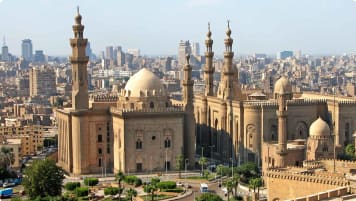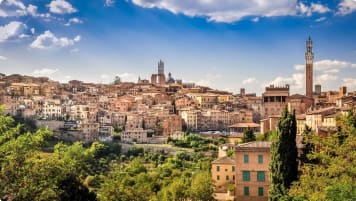Secrets of Venice: A History of Espionage
Secret Venice: The Council of Ten and Medieval Espionage The city-state of Venice emerged on a lagoon from the ruins of the Roman and Byzantine empires in the 9th century and grew to become the greatest…
5 Jan 20 · 8 mins read

Secret Venice: The Council of Ten and Medieval Espionage
The city-state of Venice emerged on a lagoon from the ruins of the Roman and Byzantine empires in the 9th century and grew to become the greatest seaport in late medieval Europe and an important centre of commerce linking the continent to the East. A wealthy city throughout most of its history, Venice was involved not only in the lucrative trade of silk and spices but also in the exchange of an equally lucrative commodity: secrets.
As Peter Ackroyd (2009) writes in Venice: Pure City, ‘The city of masks must, in any case, also be the city of secrets.’ By the 14th century, Venice’s network of state-sponsored professional and amateur spies overseen by the ‘spy chiefs‘, the Council of Ten, brought home new technologies, handled state secrets and listened in on conspiracies and betrayals of its own citizens, creating a system of fear and suspicion that can be likened to the paranoia and atmosphere of surveillance that pervades the modern world. In this article, we will discover the fascinating history of espionage in Venice and what became of the Council of Ten. Today, the Italian city of Venice and its lagoon is a UNESCO World Heritage Site and many of its most recognisable landmarks tell a story about this time period.
Early History
After the fall of the Roman Empire (read more about this in our article here), the Germanic Lombards rode into northern Italy and forced citizens to migrate to the islands of the lagoon to escape the invaders. The islands (called Venice after its inhabitants, the Veneti) became part of the Byzantine Exarchate of Ravenna until 751, and got pulled into conflict between warring factions.
When the Venetian Doge (duke) Obelerio allied with the Franks of Italy to escape Byzantine control, the pro-Byzantine factions transferred their seat of power to the Rialto group of islands, at the time the centre for exiles. This group of islands, whose citizens by the 9th century were choosing doges by election, gradually transformed into the independent city of Venice.
Consolidating Power
In the 11th century, Venice successfully repelled the Norman expansion led by Robert Guiscard (read more about Southern Italy and Guiscard in our article) and in gratitude, the Byzantine emperor Alexius I Comnenus granted Venice unrestricted access, with no customs dues, to trade throughout the Byzantine Empire in the East. This planted the seed of Venice’s monopoly in Eastern trade.
Venetian conflict with the Byzantines would later lead to Byzantine favour being granted to the Genoese, who would challenge the Venetian monopoly. (Venice would fight an intermittent war with Genoa until around the 14th century.) Venetian military missions subdued pirates along the Dalmatian coast, and orchestrated the sacking of the Byzantine capital of Constantinople in 1204; among the booty brought home to Venice were the bronze horses of St Mark’s Basilica.
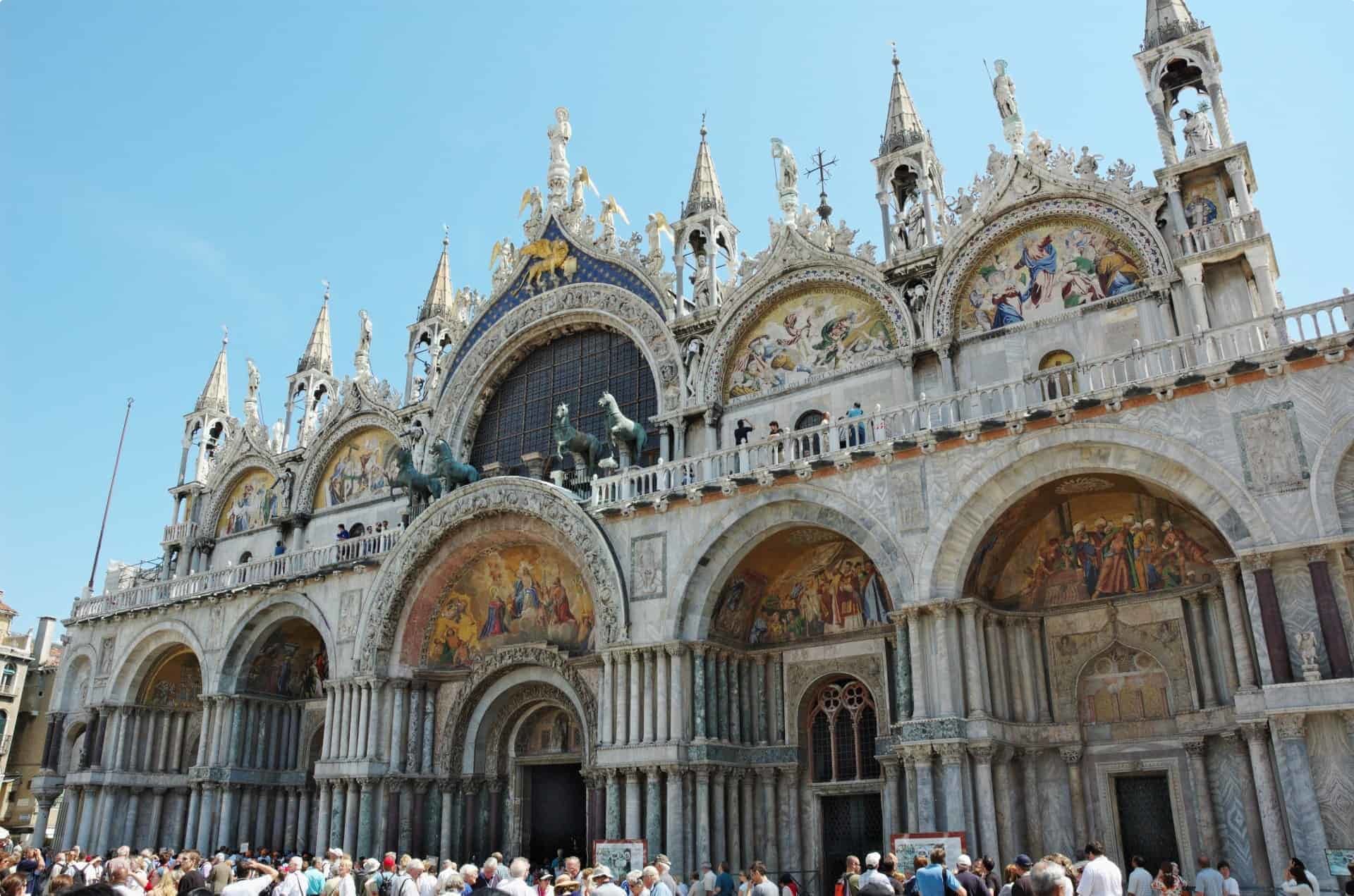
Venice also gained former Byzantine lands, such as Crete, as its new territories. In 1221, Venice established a trade treaty with the Mongol Empire.
The Republic
Venice reorganised itself into a republic, and around the mid-1100s the doge was seen not as a monarch but simply a government official. Electoral laws were instituted to prevent the formation of family factions, and attempts to gain power by prominent families of the old aristocracy failed in the 11th and 12th centuries. Affairs of the state were handled by the Great Council, consisting of (by the mid-13th century) 100 elected officials.
In 1310, the Venetian nobles Bajamonte Tiepolo and the Querini brothers organised a coup to overthrow the reigning doge and the Great Council. The plot failed and the coup leaders were sentenced to exile.
The Council of Ten was formed as a temporary measure to deal with the failed coup’s fallout, but its power would eventually grow until it had full control of Venetian government.
The Council of Ten
The Council of Ten was formed by Doge Piero Gradenigo in 1310. It was tasked with maintaining the security of the Republic and preserving the government from overthrow or corruption. According to Ioanna Iordanou (2018) in ‘The Spy Chiefs of Renaissance Venice: Intelligence Leadership in the Early Modern World‘, among the Council of Ten’s jurisdiction ‘were secret affairs, public order, domestic and foreign policy.’ Essentially, the Council of Ten was a political institution created to maintain public order – at any expense.
The Council of Ten, housed in the grand Palazzo Ducale (Ducal Palace or Doge’s Palace) in St. Mark’s Square, was made up of 10 members, plus six ducal councillors and the Doge. Every month, three of the Ten’s members took turns in heading the Council, a safeguard against autocracy and corruption. These three month-long leaders were called the Capi. Another safeguard mechanism was the zonta (‘addition’), a commission of 15 men who participated in the assemblies of the Ten and served as arbitrary referee to combat nepotism and cronyism (Iordanou, 2018).
Today, you can still visit the Sala Consiglio dei Dieci or Chamber of the Council of Ten and see where these men plotted and schemed to keep Venice’s secrets in tact. The ceiling in this room is a work of art, carved and gilded, it is divided into 25 compartments. Each compartment shows a divine image or allegory designede to demonstrate the power of the Counil of Ten in freeing the innocent and punishing traitors.
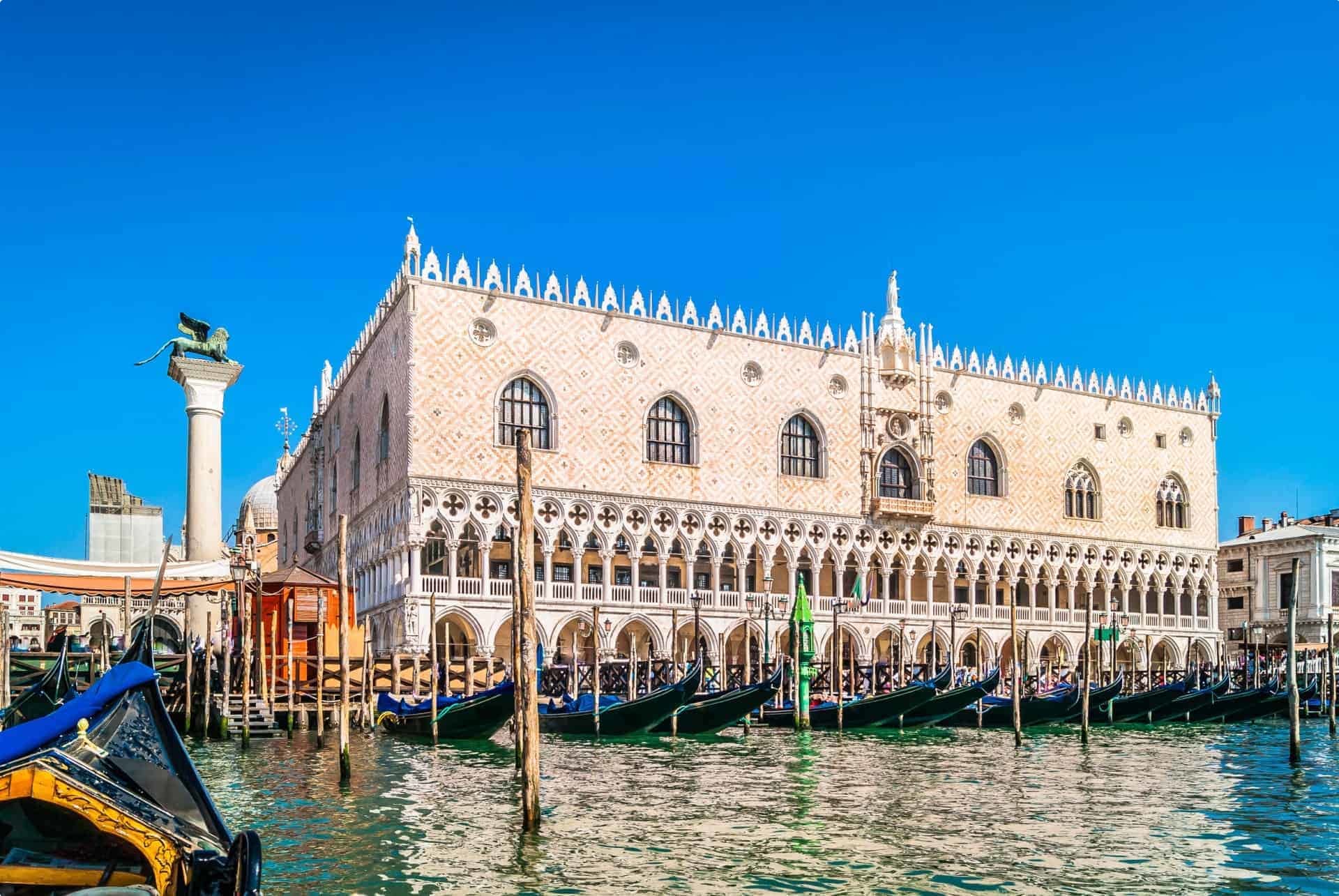
The sixteenth century saw the Ottoman invasion of the Venetian-held island of Cyprus and the entry of Portuguese traders into the spice trade, events that underlined the importance of protecting the Republic’s secrets. In 1539, the Council of Ten established the ‘Inquisitors against the Disclosures of Secrets’, later called the Inquisitors of the State, made up of three men (two from the Ten and one ducal counsellor).
The Inquisitors were given equal authority to that of the entire Council, and could try and convict those accused of treason. The Inquisitors created a large network of spies and informants to ensure that no one was spilling Venetian secrets—or if someone was, to quickly pinpoint the treasonous individual so he could be tortured and punished.
Secrets and Espionage in Venice
An endless stream of merchants, craftsmen, and travellers arrived at the powerful port of Venice, and the Council of Ten wanted to make sure that important state secrets would not leave with these individuals as they pushed on to Asia or the rest of Europe.
For the Council, secrecy meant harmony: ‘In a miniature island of 150,000 inhabitants, rumours and fabrications, especially those exposing conflict and dispute, were precarious for domestic security'(Iordanou, 2018). Venice was one of the first Italian states to establish resident embassies abroad, and its ambassadors acted as intelligence chiefs, using ciphers in reports and employing their own network of well-connected informers (Iordanou, 2018).
According to Ackroyd (2009, p. 84), ‘The oath for the Council of Ten was ‘jura, perjura, secretum prodere noli’ – ‘swear, foreswear, and reveal not the secret’. There are pages in the annals of government where the words ‘non scribatur’, let it not be written, are to be found.’ The ruling class were sworn to silence for the sake of the state, lest they be put to death, as law dictated.
However, this rule did not extend to the rest of the Venetians, who were encouraged by the Council to spy on others and divulge secrets for the good of the Republic. Espionage equalled good citizenship. According to Hedieh Nasheri’s Economic Espionage and Industrial Spying (Cambridge University Press, 2005), the Republic of Venice promoted state-sponsored industrial espionage through a monopoly law in the 15th century. Enterprising Venetians travelling around the world were encouraged to bring home inventions (a machine or a process) from foreign lands by a law which stated that only that person could use that machine or process within Venice for a number of years, bringing untold wealth to the individual and allowing Venice to gain new technology.
Industrial espionage brought home hard currency, but domestic spying flooded the Palazzo Ducale with all sorts of reports, ranging from the pettiest of accusations to most serious charge of treason. The Council of Ten got their hands on this information through the bocche dei leoni, lions’ mouths, scattered throughout the city. These were public postboxes ‘generally carved on a grotesque and offensive heard’ (Ackroyd 2009, p. 90) where informers could slip formal denunciations about their fellow citizens. They can still be found at various locations in the city and are named as such because the winged lion is considered a mascot of Venice.
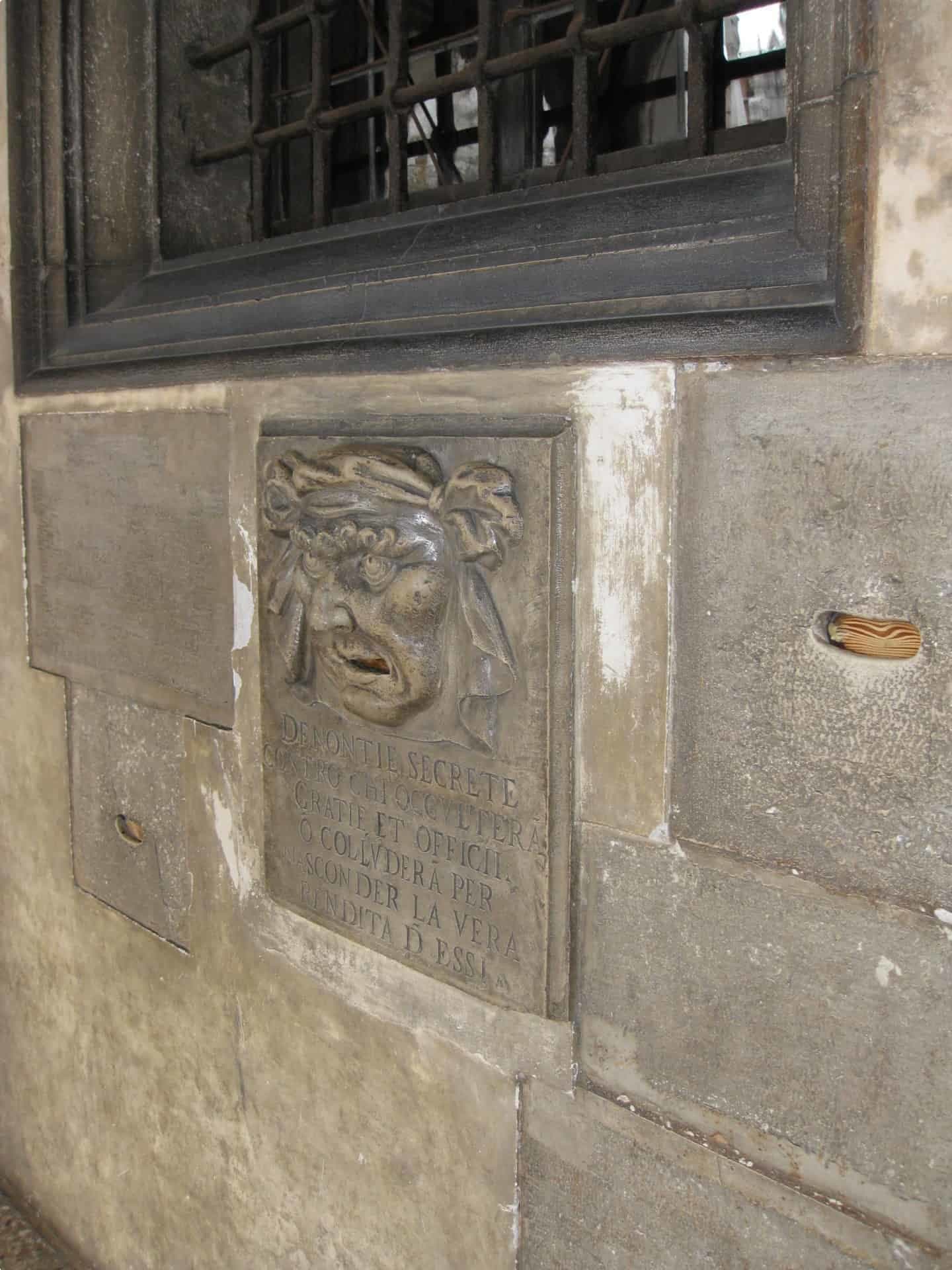
(Ackroyd writes that some Venetian country houses had a similar set-up, the bocca delle denoncie segrete, where informants could accuse estate workers.)
Everyone spied on everyone. Ackroyd writes about Vivaldi, who broke off a conversation with a friend as they were walking down St. Mark’s Square. ‘Behind closed doors, Vivaldi then told Pisendel that he had been observed by four officials. Vivaldi told his friend to remain within the house until he had discovered what offence, if any, Pisendel had committed against the majesty of Venice. It turned out to be a case of mistaken identity. But the fear had been there’ (Ackroyd, 2009, p. 89).
A famous victim of the Venetian tip line was Giacomo Casanova, whose numerous scandalous affairs made his name synonymous to ‘womaniser’. In 1755, the 30-year-old Casanova, the focus of several accusations sent in by angry husbands and upset city-dwellers, was arrested for ‘affront to religion and common decency’. He was sentenced, without a trial, to five years’ imprisonment in the piombe, the prison cells of the Palazzo Ducale reserved for political criminals. The name of the prison refers to its position directly under the roof of the palace, which was extremely cold in winter and extremely hot in summer.
Casanova would later escape these harsh conditions, living abroad in exile for 18 years before being allowed to return to Venice and employed, ironically, as a secret agent for the Venetian Inquisitors.
Casanova’s case showed that from the Council of Ten’s formation in 1310, its authority, initially restricted to matters related to state security, had grown unchecked.
Increasing Power and Decline
Let’s step back from Casanova’s 18th century Venice. In 1445, Jacopo, the only surviving son of Doge Francesco Foscari, was banished by the Council of Ten on suspected treason. Foscari was also accused of the murder of a Venetian admiral. In 1457, the Ten forced the doge to abdicate. Foscari would die eight days later.
The forced abdication of the longest-ruling doge in Venice (Foscari held the position for more than 34 years) by the Ten caused concern among members of the ruling class. The Council of Ten was growing too powerful, and in 1468 the Great Council passed a law limiting the Council of Ten’s power to ruling only on emergency matters. This law would not be effectively enforced.
Nevertheless, as the Venetian republic began to lose its territories, the Council of Ten would be unable to contain the corruption running rampant within and without its ranks. It would fall alongside the Republic of Venice in 1797 after the outbreak of the French Revolution and Napoleon Bonaparte’s rise to power.

If you want to learn more about Venice, consider joining a tour of Italy organised by Odyssey Traveller. This small group tour is especially designed for senior travellers and examines the heritage, culture, and history of Italy. The Venice stop of the tour features a visit to the Palazzo Ducale or the Doge’s Palace, once the centre of medieval cloak-and-dagger intrigue in this city of masks and secrets. You can also visit the Teatro La Fenice, Venice’s Opera House, and enjoy a leisurely boat ride down Venice’s elegant canals.
Updated on January 6, 2020
Articles about Italy published by Odyssey Traveller
- History of a City: Florence
- The Sicilians and their Kings
- Empires Crossing the Mediterranean: 1130-1300
- Secrets of Venice: A History of Espionage
- Secrets of Florence: The Definitive Guide for Travellers
- The Roman Empire
- Who were the Roman Emperors? The Definitive Guide for Travellers
- Key Figures of Renaissance Florence
- Italian Renaissance Families: The Medicis
- About Malta, Sicily, Sardinia and Corsica: islands of the western Mediterranean
- Trip advice for travellers going to Italy
- as well as more articles on Italy here
For all the articles Odyssey Traveller has published for mature aged and senior travellers, click through on this link.
External articles to assist you on your visit to Venice and Italy
Related Tours
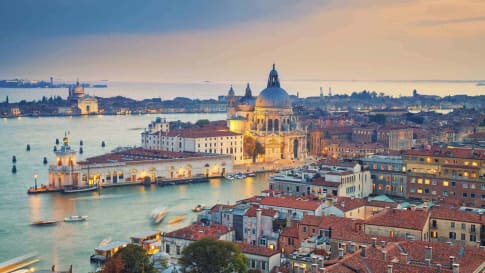
27 days
DecEuropean Cities Small Group History and Cultural Winter Tour
Visiting Albania, Croatia
An escorted tour A Journey that commences in Rome and takes in 12 destinations along its journey to Athens. This is an off season small group journey with like minded people. A small group tour across Southern Europe with local guides sharing authentic in-country authentic experiences for mature couples and solo travellers.
From A$17,295 AUD
View Tour
21 days
Apr, Aug, MayRenaissance Italy Tour: Story of Five Families
Visiting Italy
Explore Renaissance Italy on this small group tour though an examination of five significant city states. Florence, Urbino, Ferrara, Mantua and Milan were all dominated by families determined to increase the status of their city through art and architecture. Spend time coming to know the men and women who helped create the cities, as well as the magnificent legacy they left behind.
From A$14,295 AUD
View Tour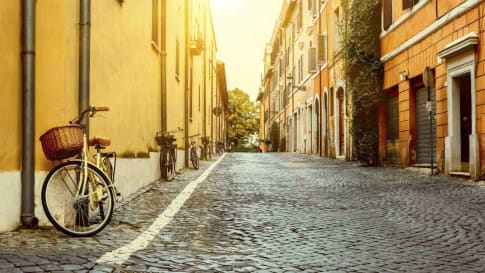
22 days
Sep, Apr, MarHeritage, Culture and History of Italy | Small Group Tours for Seniors
Visiting Italy
Rome, the world’s first superpower, lasted for almost a thousand years. In this small group tour for senior couples and solo travellers we thread our way through the Rome of the Emperors, then through the Italy of the Renaissance, Michelangelo, the Medici, and the Borgia. In the south, we visit the cosmopolitan city of Naples as well as Pompeii and the island retreat of Capri.
From A$13,695 AUD
View Tour
18 days
Aug, SepArt and History of Italy | Small Group Tour for seniors
Visiting Italy
Taken as a whole, Italian Civilization (which includes, of course, the splendid inheritance of Ancient Rome) is absolutely foundational to Western culture. Music, Painting, Sculpture, Architecture, Literature, Philosophy, Law and Politics all derive from Italy or were adapted and transformed through the medium of Italy.
From A$16,695 AUD
View Tour

